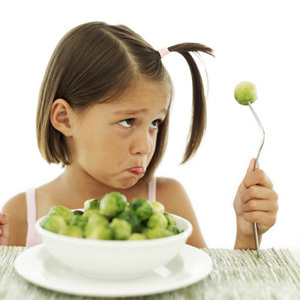
Recently my nine month old daughter pleasantly surprised me with her new found appreciation for lentils. It was only a month ago when I prepared the same lentils that her little face contorted in such a way that said, “no way – I am not eating that” and yet five minutes later she would happily gulp down her pear and banana puree. The experience has got me thinking about what makes some babies and children ‘fussy eaters’.
The answer could be found in our taste buds. That’s right, natures clever way of allowing us to taste various flavours might be a contributing factor to ‘fussy eating’. As babies we start out with thousands of tastebuds all over our mouths. Adults, however only have various concentrations of taste buds scattered in different parts of the mouth and tongue. As we age, some of those taste buds don’t get replaced, therefore flavours are far more intense for children than for us adults.
Something as simple as the bitterness of overcooked brussel sprouts (for example) or too much garlic could be what is turning them off certain foods. As with the lentils, by simply leaving out the cooked onions I had used in the first batch, my daughter seems to enjoy eating her lovely lentils. This is definitely something worth considering when feeding our kids. Here is the link to the lentil recipe mentioned in this post. https://www.annabelkarmel.com/au/recipes/lovely-lentils/